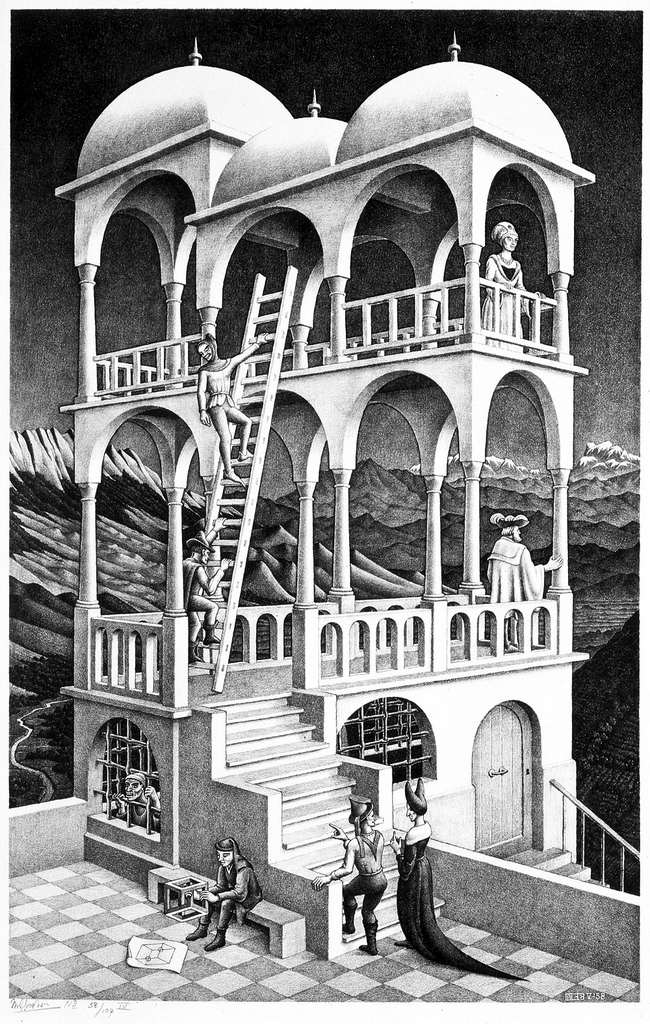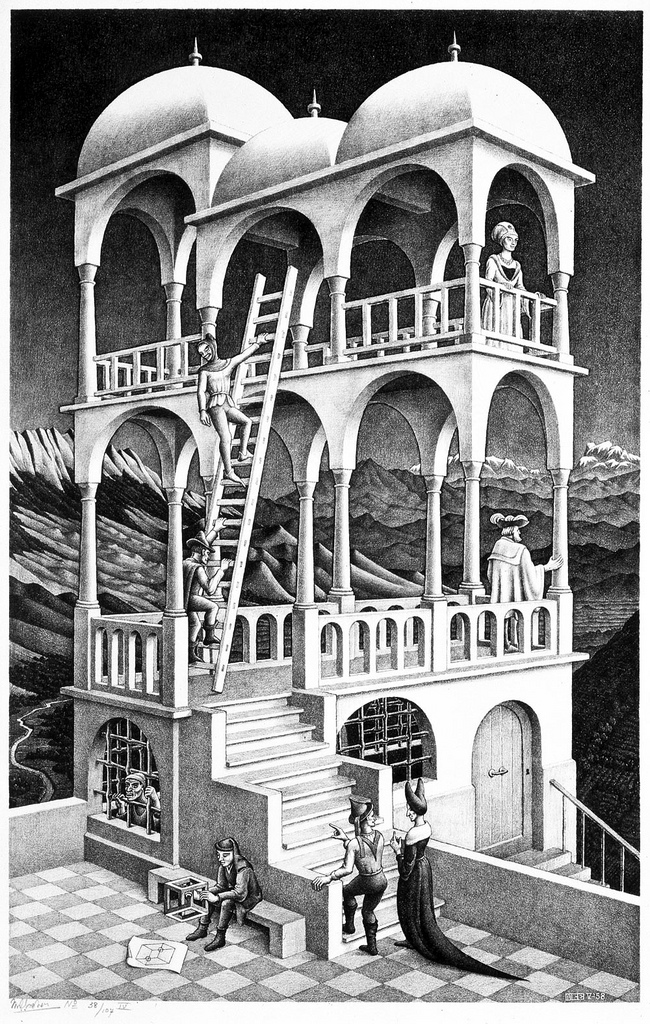
There is a lot of talk in the photography world about ‘being creative.’ It is a funny thing, when you look at most major photographic competitions, they all put you in a box … literally. For reasons of website formatting and simple organization, the square and rectangle dominate photography. What if you want to do something different?
The transition from seeing with our eyes to seeing with a camera is a tricky one to understand. Our eyes see in two ways: we have a general field of view, somewhere around 108 degrees, but we also see in small sections. If you would like to experiment, try these two tests…
Does your computer have a time read out on the upper right hand corner?
If so, can you see it while reading this article? Chances are you can see it. It is in your field of view, but if you are looking at the article, you can’t read the time. You can ‘see’ it, but not really see it. When we see the total field we sacrifice being able to see the details.


Any optical illusion, like the ones drawn by M.C. Escher, work for the same reason as above. We see in small sections. Our eyes bounce around assembling a complete impression in our mind. But when an artist carefully plays with the areas we can see versus the ones we can’t see, optical illusions start to take effect. This is why things look right and impossible at the same time in certain M.C. Escher drawings.
When we see the total field we sacrifice being able to see the details.
What does this mean for us?
It means seeing, as we understand it, is rather complicated. And as you transition from looking with your eye to looking through a camera, there is a bit of translation of shapes that occurs.
Seeing with your eye: Spots and fields
Seeing through a lens: Creates a flat but circular field of view
Seeing through a lens on a camera: The camera crops off part of the circle so you are left with a rectangle (or square in other formats)
Seeing a photograph: The cropped view of the camera is usually the photograph.
But what if there is more to see? Why don’t we ever return to seeing in a field?
This was the dilemma I was facing with “Lost Ceremony.” Over the five years that I shot the project in Japan, the goal was to explore the world of building and the world of philosophy through the Japanese craftsmen. They appeared to be experts in making ‘things that last,’ but how did they achieve it? In order to make ‘things that lasts’ the way a master craftsman does, these two worlds need to come together.

The first world is of building. This is where years of apprenticeship and building experience converge so that ordinary materials can be transformed into extraordinary objects. For all of the craftsmen I met, there was not a single one where you could actually see their experience. The experiences that someone possess are invisible. You can only see how they apply that experience when they make something. The way they move their hand or hammer a piece of steel … it is when they are actually doing something that you can see the experience play out. When they sit in front of you there is nothing to see. The world of building needs to be made visible.
The second world that I hoped to open up was the world of philosophy through Zen Buddhism. Zen plays an instrumental role in understanding ‘why craftsmen build the way that they do.’ It contains many of the principles of interconnectedness, economy, and patience that have come to typify the Japanese craftsman. Though once again, you can’t exactly walk up and ask “Can I see your Zen?”

When the world of building and the world of philosophy come together they become visible. They reveal themselves in a physical form that we can watch and enjoy. It is at this intersection that my pictures began. And it was also at this intersection that the format of the photos emerged.
For many of you who have seen the “Lost Ceremony” panels online, you might be wondering, “Why are they shaped like a curved panel?” Was it some random thing to make the pictures look cool? Or was there a deeper purpose behind the design? The answer is yes, the design is a purposeful shape intended to echo the idea of two worlds converging and the results emerging towards the viewer.
The exact shape is a representation of the space where two very large circles overlap. Most of the world of the master craftsman remains hidden. They each have a unique history that only reveals itself when they start talking or building. And considering this was Japan, there was more building than talking.

The panels are designed to show the space where the overlapping worlds of building and philosophy become visible.

If an odd number is used, like three or five, it immediately draws attention to the center panels. If two or four are used, it seems to read like a split screen or a comparison. Six panels allows for them to be read as a continuum with no single picture being more important than the other.
Yes, because each photo was shot individually, the panels can be sized at three feet or six feet and there is zero loss in resolution. In truth, the panels could be up to 12 feet long based on the file size. But I figured that might be too large for most people’s homes, so the largest size right now is six feet on the long edge.
The panels are designed to show the space where the overlapping worlds of building and philosophy become visible.
As a result, it seemed like the format of the finished project should reflect the idea that most of what occurs we don’t see; it is only at the intersection of the two worlds of building and philosophy that they are visible. All too often photographers leave the finished format up to the camera. But any artist who considers every aspect of their work is bound to discover that a project fully considered will always have a deeper effect than one that comes ‘out of the box.’ So don’t limit yourself to the rectangle. Play, explore, and discover different ways of presenting your photographs until you find something that best reflects the ideas behind the work.
To inquire about the availability of “Lost Ceremony” prints in the US or Europe you can email here and for Asia and Australia please email here.